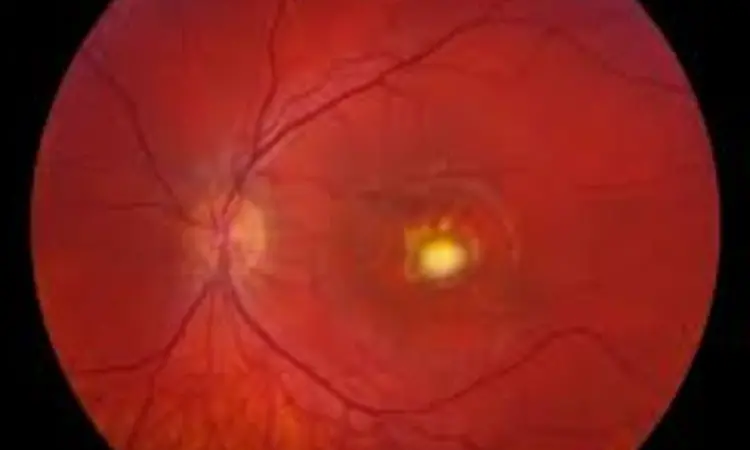- Home
- Medical news & Guidelines
- Anesthesiology
- Cardiology and CTVS
- Critical Care
- Dentistry
- Dermatology
- Diabetes and Endocrinology
- ENT
- Gastroenterology
- Medicine
- Nephrology
- Neurology
- Obstretics-Gynaecology
- Oncology
- Ophthalmology
- Orthopaedics
- Pediatrics-Neonatology
- Psychiatry
- Pulmonology
- Radiology
- Surgery
- Urology
- Laboratory Medicine
- Diet
- Nursing
- Paramedical
- Physiotherapy
- Health news
- Fact Check
- Bone Health Fact Check
- Brain Health Fact Check
- Cancer Related Fact Check
- Child Care Fact Check
- Dental and oral health fact check
- Diabetes and metabolic health fact check
- Diet and Nutrition Fact Check
- Eye and ENT Care Fact Check
- Fitness fact check
- Gut health fact check
- Heart health fact check
- Kidney health fact check
- Medical education fact check
- Men's health fact check
- Respiratory fact check
- Skin and hair care fact check
- Vaccine and Immunization fact check
- Women's health fact check
- AYUSH
- State News
- Andaman and Nicobar Islands
- Andhra Pradesh
- Arunachal Pradesh
- Assam
- Bihar
- Chandigarh
- Chattisgarh
- Dadra and Nagar Haveli
- Daman and Diu
- Delhi
- Goa
- Gujarat
- Haryana
- Himachal Pradesh
- Jammu & Kashmir
- Jharkhand
- Karnataka
- Kerala
- Ladakh
- Lakshadweep
- Madhya Pradesh
- Maharashtra
- Manipur
- Meghalaya
- Mizoram
- Nagaland
- Odisha
- Puducherry
- Punjab
- Rajasthan
- Sikkim
- Tamil Nadu
- Telangana
- Tripura
- Uttar Pradesh
- Uttrakhand
- West Bengal
- Medical Education
- Industry
New Study Identifies Distinct Entity in Pachychoroid Disease: Pachyvitelliform Maculopathy

Israel: Researchers led by Assaf Hilely have identified a novel entity within the pachychoroid disease spectrum known as pachyvitelliform maculopathy (PVM). Pachychoroid disease is characterized by the thickening of the choroid layer in the eye, and PVM is associated with acquired vitelliform lesions (AVL) and retinal pigment epithelium (RPE) dysfunction.
The study published in The British Journal of Ophthalmology was a retrospective, multicenter, observational analysis, involving the review of medical records and multimodal imaging of patients with pachychoroid disease and AVL. Seventeen eyes of 17 patients were included in the PVM group, with a mean age of 71.41 years. The average follow-up period was 33.15 months.
Key findings from the study include:
- Visual Acuity (VA): Baseline VA in the PVM group was 20/40, which declined to 20/100 during the follow-up period.
- Pachyvessels and AVL: All AVLs were detected overlying pachyvessels using optical coherence tomography (OCT) and were hyperautofluorescent with fundus autofluorescent imaging.
- Choroidal Thickness: The mean central choroidal thickness (CCT) in the PVM group was significantly greater at 352.35 µm compared to 226.88 µm in the control group (p<0.001).
- RPE Dysfunction and Atrophy: Retinal pigment epithelium disruption was present in 64.71% of eyes with PVM at baseline, and 41.18% developed macular atrophy by the end of the follow-up period.
The researchers suggest a possible pathogenesis of RPE dysfunction in PVM, which may be related to the thick choroid in affected eyes. This could lead to the accumulation of undigested photoreceptor outer segments and the formation of AVL. Clinicians should be aware of this common cause of vitelliform lesions and the poor visual prognosis due to the high risk of atrophy development.
Pachyvitelliform maculopathy is an important addition to the spectrum of pachychoroid disease, and understanding its distinct features can aid in accurate diagnosis and appropriate management. As the study highlights the association between choroidal thickness and RPE dysfunction, further research may shed light on potential treatment strategies to address this visual impairment effectively.
Early detection and intervention are crucial in managing PVM, and ophthalmologists should remain vigilant in recognizing the signs and symptoms of this condition to provide timely care and optimize patient outcomes. Future studies may explore potential therapeutic approaches to address RPE dysfunction and prevent or slow down the development of macular atrophy in PVM patients.
Reference:
Hilely, A., Au, A., Lee, W. K., Fogel Levin, M., Zur, D., Romero-Morales, V., Santina, A., Lee, J. S., Loewenstein, A., & Sarraf, D. (2023). Pachyvitelliform maculopathy: an optical coherence tomography analysis of a novel entity. The British Journal of Ophthalmology. https://doi.org/10.1136/bjo-2022-322553
Dr Kamal Kant Kohli-MBBS, DTCD- a chest specialist with more than 30 years of practice and a flair for writing clinical articles, Dr Kamal Kant Kohli joined Medical Dialogues as a Chief Editor of Medical News. Besides writing articles, as an editor, he proofreads and verifies all the medical content published on Medical Dialogues including those coming from journals, studies,medical conferences,guidelines etc. Email: drkohli@medicaldialogues.in. Contact no. 011-43720751


